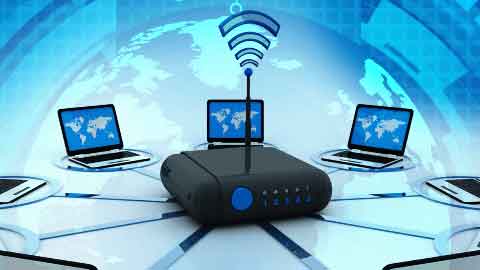In today’s world, communication has become an integral part of our lives. With the advancements in technology, we now have various types of communication systems available to us. Two such systems are Data Communication and Digital Communication. Although these two terms are often used interchangeably, they are not the same thing. In this blog, we will discuss the differences between Data Communication and Digital Communication.
Data Communication:
Data Communication is the process of transmitting data between two or more devices. This data can be in the form of text, audio, video, or any other type of information. Data Communication involves the use of communication protocols to establish a connection between devices and to transmit data. The communication protocols define the rules and standards for communication between devices, including the format of data, the speed of transmission, error checking, and flow control.

Data Communication can take place over a variety of transmission media, including wired and wireless networks. Some examples of wired transmission media are twisted pair cables, coaxial cables, and fiber-optic cables. Examples of wireless transmission media include radio waves, microwaves, and infrared radiation.
Digital Communication:
Digital Communication, on the other hand, is a subset of Data Communication that involves the transmission of digital signals between devices. Digital signals are discrete signals that can take only a finite number of values. These signals can be represented using binary digits, also known as bits, which have a value of either 0 or 1.
Digital Communication systems convert the analog data into digital signals using an analog-to-digital converter (ADC). The digital signals are then transmitted over a communication channel and received by the receiver. The receiver then converts the digital signals back into analog data using a digital-to-analog converter (DAC).
One of the key advantages of Digital Communication is that it is less susceptible to noise and interference than analog communication. This is because digital signals can be easily regenerated and filtered to remove noise and interference.
Differences between Data Communication and Digital Communication:
- Data Communication is a broader term that includes both analog and digital data transmission. Digital Communication, on the other hand, is a subset of Data Communication that only involves the transmission of digital signals.
- Data Communication involves the transmission of any type of data, including text, audio, and video. Digital Communication, on the other hand, only involves the transmission of digital signals.
- In Data Communication, the data can be transmitted using either analog or digital signals. In Digital Communication, only digital signals are used.
- Digital Communication is less susceptible to noise and interference than analog communication.
In conclusion, both Data Communication and Digital Communication are important in today’s world of technology. While Data Communication involves the transmission of any type of data, Digital Communication specifically involves the transmission of digital signals. Digital Communication is more reliable and less susceptible to noise and interference than analog communication, which makes it a preferred choice for many applications.